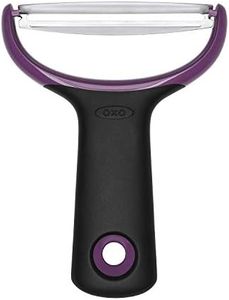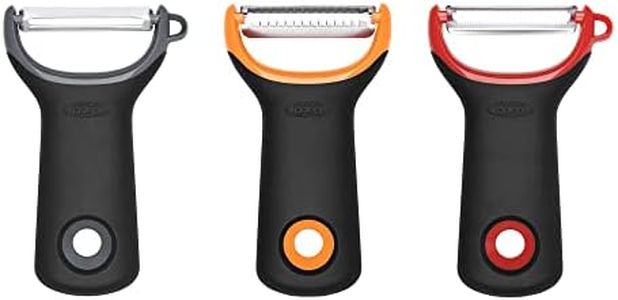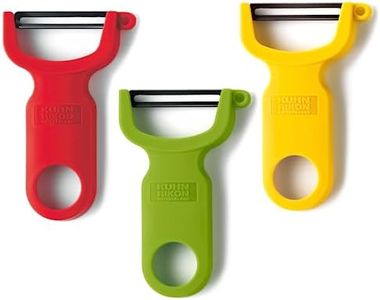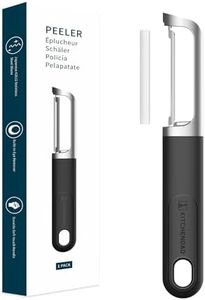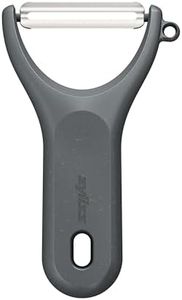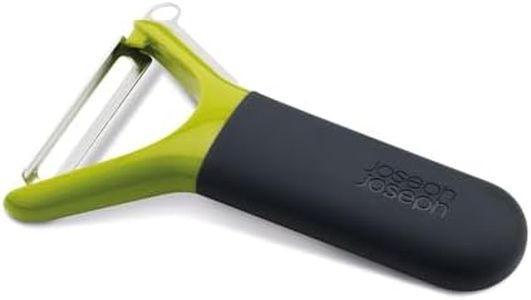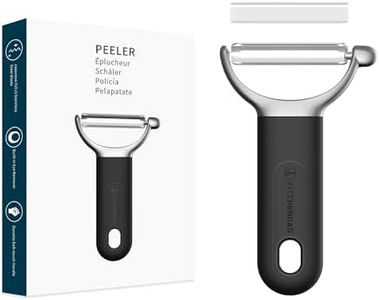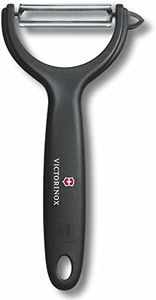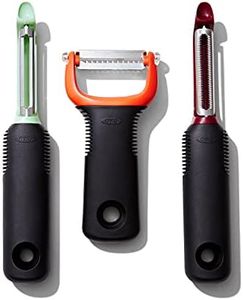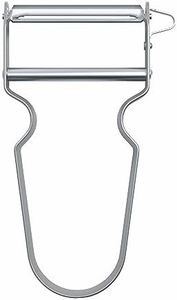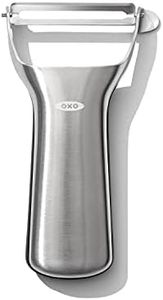We Use CookiesWe use cookies to enhance the security, performance,
functionality and for analytical and promotional activities. By continuing to browse this site you
are agreeing to our privacy policy
10 Best Vegetable Peelers
From leading brands and best sellers available on the web.By clicking on a link to a third party's website, log data is shared with that third party.
#1
Winner
Buying Guide for the Best Vegetable Peelers
Choosing the right vegetable peeler can make meal preparation much easier and faster. The goal is to find a peeler that feels comfortable in your hand, does the job efficiently, and matches the types of vegetables you most often prepare. Understanding key features will help you pick a peeler you'll actually like using and that will last.Blade TypeThe blade is the heart of a vegetable peeler and can come in different styles such as straight, serrated, or julienne. A straight blade works well for most firm vegetables and fruits, making it a versatile option for daily use. Serrated blades grip smoother or softer foods better, like tomatoes or peaches. Julienne blades allow you to create thin vegetable strips, perfect for salads or garnishes. To pick the right one, think about which vegetables you peel most often—firm or soft, or if you want to add decorative cuts.
Peeler ShapePeelers usually have either a Y-shaped (horizontal) or swivel (vertical) design. Y-shaped peelers are generally easier to control and work quickly over larger vegetable surfaces, while swivel peelers have blades that move with the shape of the vegetable, making them great for peeling round or irregular items like potatoes. Your hand comfort and dexterity should guide your choice; test holding different shapes to see what feels best.
Handle Comfort and GripThe handle should be comfortable to hold and provide a non-slip grip, especially when your hands are wet. Handles come in various materials like plastic, rubber, or wood. Rubbery or textured handles offer better grip, which is important if you have limited hand strength or peel large quantities. Choose a handle that fits well in your hand and feels secure, especially if peeling is a regular part of your cooking routine.
Ease of CleaningSome peelers can be washed in a dishwasher, while others must be cleaned by hand. Simple designs with fewer parts are easier to clean, which is important to prevent food from getting stuck. If you value convenience and speed during cleanup, look for a peeler labeled as dishwasher-safe or with minimal nooks and crannies.
Blade MaterialThe most common blade materials are stainless steel and ceramic. Stainless steel blades are durable and resistant to rust, making them a great all-around choice and suitable for frequent use. Ceramic blades stay sharper longer and don't rust, but they are more fragile and can chip if dropped. Consider how often you use a peeler and how careful you are with your utensils when picking the blade material.
Safety FeaturesSome peelers include safety features like blade covers or ergonomic designs that minimize the risk of accidental cuts. This is particularly relevant if children might help in the kitchen, or if you're concerned about hand slips. Choose a peeler with a safety feature only if you feel you need that extra precaution while cooking.
